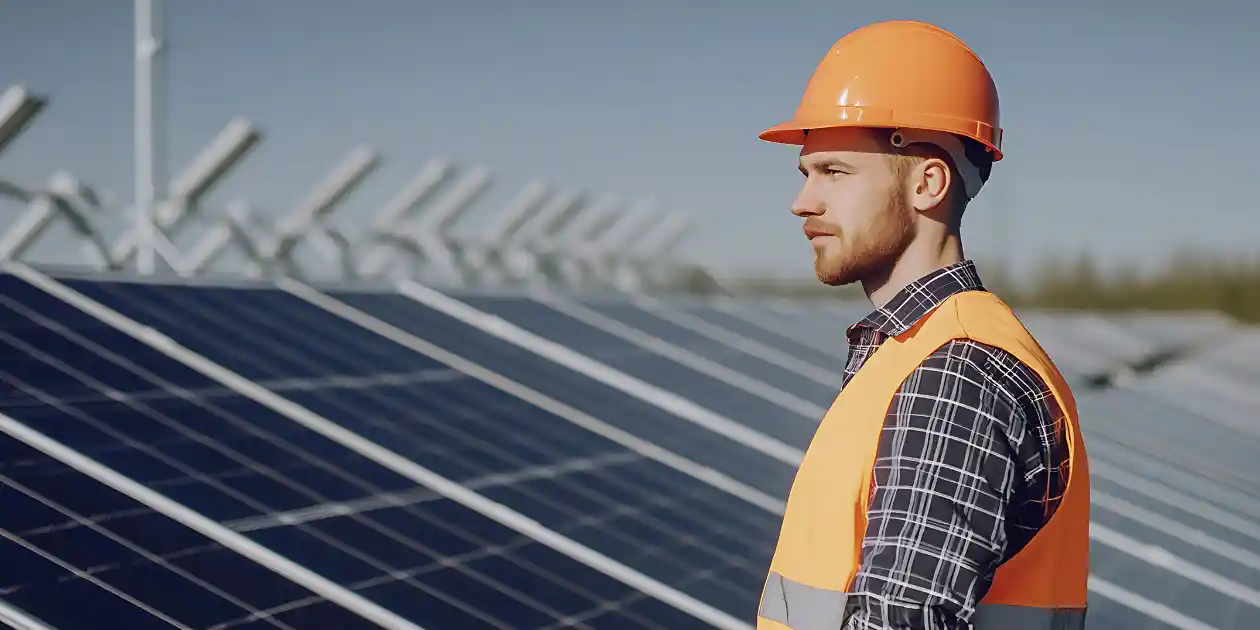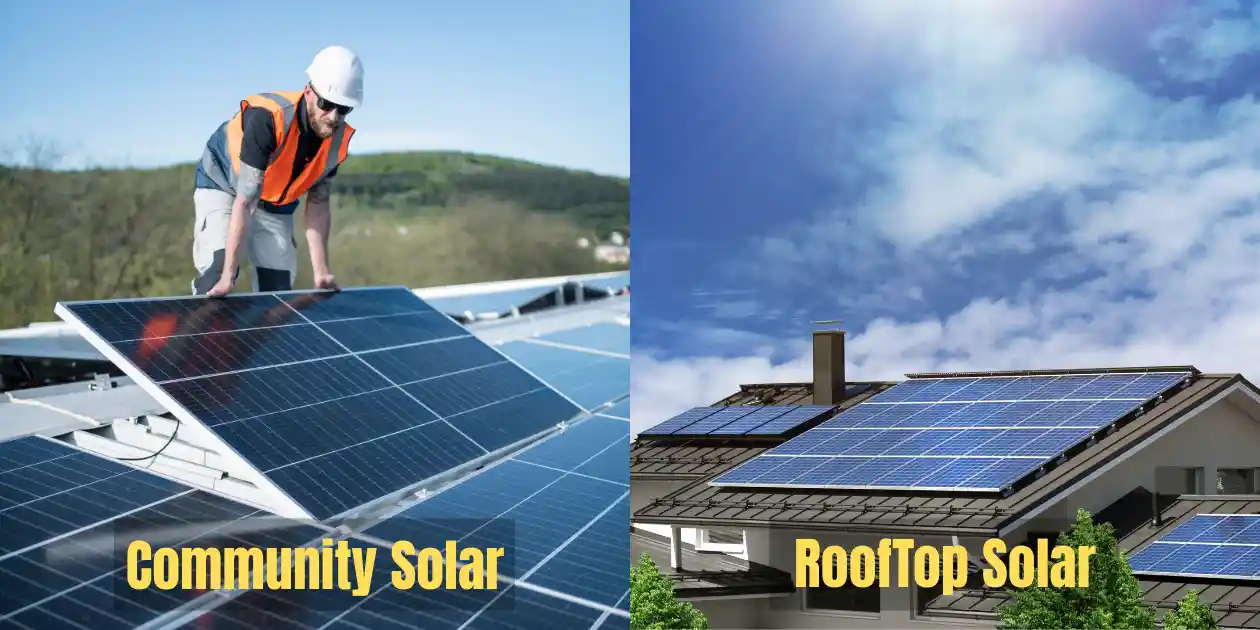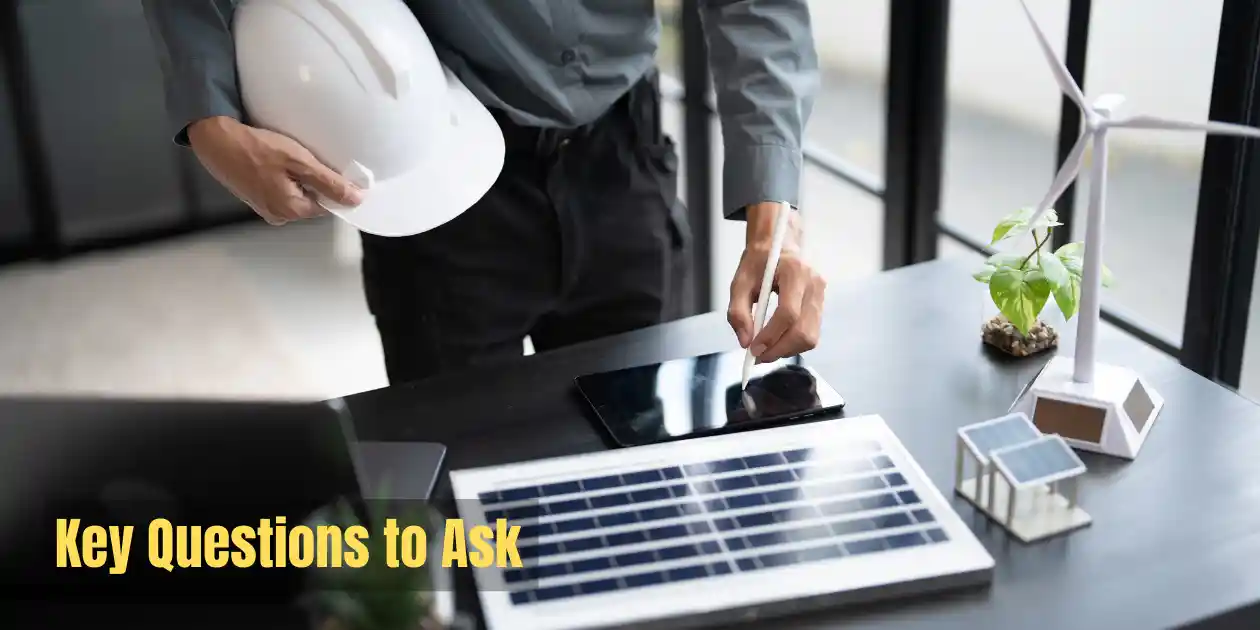The picture of a sun soaked roof with black, sleek solar panels has become a image of sustainable living and independence. For years, “going solar” has been a defining image. But what happens to all the people who this image represents unattainable? If you’re a renter or condo owner bound by HOA rules or a homeowner who’s roof is shaded by magnificent old trees, or is unable to afford the cost of a five figure upfront of a residential solar panel?
The past has seen these barriers kept a large segment of the population from taking part in the green energy revolution. However, a new model is changing the narrative making solar energy accessible to virtually all people: community solar.
Community solar removes the old barriers of ownership price, cost, and location. It’s a revolutionary approach which lets you sign up to a massive local solar farm and get directly a reduction in your electric bill without the need to install one piece of technology on your home. This guide will explore the workings for community solar. It will and compare it to the traditional solar on rooftops, examine the many benefits it offers, highlight the potential issues, and offer an easy to follow guideline on how you can make use of this amazing source to save money and help create a more sustainable future.
What is Community Solar?
At its heart the concept of community solar (often referred to as “shared solar” or a “solar garden”) is an idea that is simple. Imagine a huge community garden. There aren’t many people with enough space or sun-filled conditions to grow their own So a group of people can share a huge and fertile area. Each individual is given a tiny part of the garden and in return, they are given part of the produce that is fresh picked.

Community solar operates the same manner however, it uses solar energy. A solar developer constructs large solar farms in a sun-drenched, ideal spot within the electric utility’s coverage area. Instead of a single person being the owner of the entire farm, the community can “subscribe” to a small part of the farm. The energy produced by the entire farm is fed to the power grid in your area, and based on the length the amount of subscription you are rewarded with an amount of the value generated by the farm in the form of credits added to your monthly energy bill.
The panels are not yours to own and you don’t take care of them and you don’t even install them. You just subscribe and then save.
How Does Community Solar Actually Work? A Step by Step Breakdown
It’s easy to get lost because the power doesn’t flow straight to the home. This is how it operates from sign-up to savings:
- Subscriber: You find a community solar initiative in your area and then sign for. The service provider determines the size of your share of the subscription based on your previous usage of electricity so that your share is approximately the same amount of electricity you use annually.
- Power Generation The solar farm produces green electricity, which is directly fed into the power grid of local utilities.
- Credit Allocation (Virtual Net Metering): Your utility company is able to track the energy generated by your portion of the farm, and then applies the value of that energy in the form of a credit directly on your monthly bill for utility. This is referred to by the name of Virtual Net Metering (VNM) because you receive the financial benefit from the solar panels but are not physically connected to them.
- Savings and Billing: You continue to get your normal utility bill, however it’s reduced by energy credits that you’ve earned. You pay your community solar company for your subscription at a lower cost, resulting in net savings.
Demystifying the Billing: A Clear Example
The two bill structure is often the most confusing component. Let’s look at it with precise numbers. Let’s assume that your community solar subscription comes with an guarantee of 10% off.
| Billing Item | Description | Amount |
| Normal Monthly Utility Bill (Before Solar) | The typical cost of electricity. | $120 |
| Solar Credits earned (in the month of sunshine) | The amount of energy that your share of the produce. This is then applied to the bill for utility. | -$100 |
| New Utility Bill Amount | Your original bill less credits. | $20 |
| Community Solar Provider Bill | You pay the provider for the 100 i n c r e d i t s , b u t a t a 10 100 in credits, butata 10 100 x 90%) | $90 |
| Total Monthly Cost | What you pay the utility ( 20 ) + w h a t y o u p a y t h e s o l a r p r o v i d e r ( 20)+whatyoupaythesolarprovider( 90). | $110 |
| Net Monthly Savings | Your original bill ( 120 ) − y o u r n e w t o t a l c o s t ( 120)−yournewtotalcost( 110). | $10 |
In this case you’ve saved yourself $10 for the month, with no effort following the initial signing-up as well as promoting green energy.
Community Solar vs Rooftop Solar: A Head to Head Comparison

For homeowners with an adequate roof, deciding between community solar or roof top solar is an important choice. Both are fantastic methods to help support renewable energy sources, however they are not the same for different reasons.
| Feature | Community Solar | Rooftop Solar |
| Upfront Cost | Usually, there is no charge for subscription models. | $15,000 – $25,000+ (before incentives). |
| Eligibility | Anyone with an electric charge within a region that is eligible (renters and condo owners homeowners). | Homeowners who have a good and sunny roof in good shape. |
| Maintenance | None. The developer takes care of the maintenance and insurance and repairs. | Owner is accountable for repairs, maintenance, and insurance. |
| Portability | High. Subscriptions are often cancelled or transferred in the event of a relocate. | Low. The system is an integral part of the house; it is it is a commitment of 20 years or more. |
| Savings Potential | Good. It is typically a guarantee of 5 to 15 percent savings annually on the cost of electricity. | Excellent. You can reduce the majority or all of your energy costs which will result in a higher return on investment over the long term. |
| Tax Credits | The majority of subscriptions are not accessible to subscribers (but might be available to owners of models). | Homeowners are eligible for the federal 30% solar tax credit, as well as local incentives. |
| Property Value | There is no direct impact on the value of your home. | Studies have shown that it can boost the value of a house’s resale. |
Who is the Ideal Candidate for Community Solar?
The great thing about community solar lies in its flexibility. It’s the best solution to:
- Residents and Renters dwellers: No ownership is necessary.
- condominium owners and townhouse owners: Bypass the HOA’s restrictions on modifications to exteriors.
- Homeowners with Roofs that aren’t suitable: The solution for shaded, north-facing or older roofs.
- individuals with financial limitations: The $0 upfront cost of a subscription removes the most significant obstacle to solar.
- Anyone who plans to move: Offers flexibility that fixed rooftop panels can’t.
Potential Challenges and Considerations to Watch For Community Solar
Although community solar is extremely advantageous, it’s vital to make sure you are a knowledgeable buyer.
- Variable Production: Solar power plants produce more electricity during warm summer months, and less during winter’s cloudy months. That means that your credit and savings can fluctuate according to the seasons. Many providers will account for this and the savings are calculated on an annual basis.
- The Two Bill System: This may initially seem difficult to understand. Make sure you know how payments and credits work prior to signing up.
- Conditions of Contract: Be wary of firms that advertise teaser rates which disappear, or contracts that have steep and unannounced cancellation fees. The most reliable providers are open about the terms of their contracts.
- Accessibility: Community solar is dependent on legislation from the state and isn’t widely available. The rapid growth however, means that new programs are being launched regularly.
How to Find and Join a Community Solar Project
Are you ready to start? This is a step by step tutorial.
- Confirm Availability: The first step is to determine whether community solar is operating in your state and the utility area. A quick search of “[Your State] community solar” is the best place to start.
- Locate Local Projects: Use an online marketplace such as EnergySage or search for state-approved lists of service providers. These platforms let you examine savings rates for projects, compare prices and contract conditions.
- Compare Providers: Be sure not to sign up for the first time. Follow the steps below to review your options thoroughly or select quick home experts with complete trust.
- Join and Submit Documents: The sign up process is generally simple, and requires you to supply your information for your utility account as well as accept an electronic agreement.
- Then Wait for Activation: It may take between 3 to 4 billing cycles for the solar and utility companies to make your subscription active. Once your subscription is activated, you’ll begin to see credits appearing in your bill for utility.
Your Checklist: Key Questions to Ask a Community Solar Provider
Make use of this table as a reference when you’re talking to potential suppliers to make sure you’re getting fair and honest deal.

| Category | Key Question | What to Look For |
| Savings & Cost | What is my savings guarantee? Is it a percentage fixed discount or a fixed cost per kWh? | The discounted percentage fixed (e.g. 10 percent) is usually the simplest and secure, as your savings are secured according to the fluctuations in utility rates. |
| Are there any fees for signing up or cost-of-service upfront? | In the case of model subscriptions, the answer must not be not. | |
| Contract Terms | What is the term that the agreement is? | Contracts range from one through 20 years. Contracts that are shorter-term or with ease of cancellation provide more flexibility. |
| The cancellation policies are what you will find? And do you have any charges? | Find a policy that is clear with a reasonable time-frame for notice (e.g. 30 to 90 days) and minimal or no cancellation charges. | |
| Billing | Could you send an example bill that demonstrates how the payments and credits are made? | A reliable provider will be more than happy to guide you through an example bill to make sure you are aware of the procedure. |
| Moving | What happens if I decide to move? | Choose a provider that allows you to transfer your subscription to a new residence (if within the same utility area) or cancel your subscription without cost. |
The Driving Force Behind Community Solar’s Growth
The concept of community solar goes beyond being a great idea. It’s also a rapidly growing segment of the market for renewable energy. This expansion is driven by:
- State Policies: States create Renewable Portfolio Standards (RPS) and specific legislation for community solar that allows these solar projects to operate and connect directly to grid.
- Federal Incentives: In the Inflation Reduction Act (IRA) of 2022 provides substantial tax credit incentives for solar-powered community projects, especially those that serve communities with moderate to low incomes, making them financially more viable to construct.
- Consumption Demand: More and more consumers become aware of the climate crisis and look for ways to save money, the need for affordable, clean energy solutions has increased dramatically.
- Energy equity: Community solar is an effective tool to ensure environmental justice by providing access to the advantages of clean energy in terms of financial to communities that previously been denied access to clean energy.
Conclusion
Community solar is a significant change in the way we get access to green energy. It transcends the single-size-fits-all system of rooftop panels and allows anyone to take part regardless of location of residence or financial standing. It’s a great instrument for creating an equitable, sustainable and green energy grid from the beginning.
When you sign up to an area based solar farm you’re not just making an intelligent financial choice which will reduce the monthly cost of electricity and save you money, but you’re also giving a vote of confidence to the environment and an improved local economy. If you’ve always wanted to participate in the solar revolution but believed that you could not then now is the perfect right time to investigate the community solar option and take advantage of your share of the sun’s bounty.
FAQs
What exactly is community solar in its simplest terms?
Community solar lets you enjoy the benefits of solar energy without installing panels on your roof. You join a local solar farm and receive credits on your monthly electric bill, reducing your costs. It’s like having solar panels, but they’re located elsewhere.
How can it actually help me save money if I need to subscribe to a service?
The savings come from a built-in discount. The solar credits you receive on your electricity bill are worth more than what you pay the solar company for your subscription. For example, you might get a $100 credit on your bill but only pay $90 to the solar company, saving you $10.
Who can join community solar?
Anyone with their own electric bill in an area with a community solar program can join. This includes condo owners, apartment dwellers, and homeowners especially those who can’t or don’t want to install rooftop panels.
I’m a renter. Can I join community solar?
Yes! This is one of the biggest advantages of community solar. Since no panels are installed at your home, you don’t need your landlord’s permission. As long as you pay your own electric bill, you can sign up.
What if my roof is shaded or old? Does it matter?
No, it doesn’t matter. The condition and orientation of your roof are irrelevant for community solar, since the panels are located offsite at a professionally built solar farm in a sunny location.
Why do I receive two bills? Isn’t that complicated?
It may seem complicated at first, but it’s simple once you understand the process. Your utility bill shows your energy use and the solar credits you’ve earned, which lower your amount due. Your community solar bill is your monthly subscription fee, paid at a discount. Your total savings are the solar credits minus your subscription fee. Many providers offer online portals to track both.
Are savings guaranteed? What can I expect to save?
For most subscriptions, yes. Most providers offer a discount usually 5–15% off the value of your solar credits. This means you’re guaranteed to save on your total electricity costs over the year.
Are there any upfront costs or fees to join?
Most community solar subscriptions have no upfront costs, sign-up fees, or installation charges. If a provider asks for a large payment to join, it may be an ownership plan or a different financial product.
